Straight from the Source
How do you build a robot that looks and moves like a real person? What can we learn about the properties of extremely thin materials by firing lasers at them? How does an overabundance of deer affect our forests? What can we anticipate about the future behavior of volcanoes by studying material from eruptions that happened half a million years ago?
Those were just a few of the questions the 81 students enrolled in Vassar’s Undergraduate Research Summer Institute (URSI) attempted to answer this summer in projects overseen by 33 faculty mentors. And for the first time in three years, all of the research projects were carried out on campus. “For the last two years, URSI was profoundly impacted by COVID,” said Benjamin Lotto, Professor and Chair of Mathematics and Statistics and Director of the URSI program. “My hope for this summer was to ‘build back better’ by restoring the traditional, on-campus URSI experience and community. The record number of exceptional students doing full-time research in 32 projects far exceeded anything that I could have imagined.”
In early fall, URSI students and faculty will demonstrate what they learned at the URSI Symposium. Later, many of them will present their research at regional and national meetings and publish their work in a variety of publications, including top-tier scientific journals.
Following are brief reports on four of this summer’s URSI projects:
Meet HARPER, Vassar’s First Humanoid Robot
The three students engaged in this project with Professor of Cognitive Science Kenneth Livingston learned that one answer to the question, How do you build a robot? is: Very slowly and meticulously. “It’s amazing how many times we’ve taken it apart and put it back together again,” said Chaz Harrison ’23, a cognitive science major from Thatcher, AZ.
Video by Craig Bonheur
Harrison and her URSI teammates, Kristen Koenig ’23 and Duc Dang ’23, launched the project by using a 3D printer to create the head, arms, and torso for HARPER (Humanoid Autonomous Robotic Platform for Experimental Research). Then the real challenges began as the team developed the software that would teach HARPER to move and began to assemble the electric motors, wires, and other materials that would enable their creation to do so.
While Harrison said she had developed an interest in robotics while she was in middle school, Koenig, a cognitive science major from Trappe, PA, said she first became intrigued with creations like HARPER when she took Livingston’s course Perception and Action last fall. She said she had rarely performed any engineering tasks until she joined the HARPER team. “I had about a two-week learning curve in soldering,” Koenig said. “It was great to have so much time to work on a single project without other distractions. I learned a lot in a short time.”
While all three students took part in all phases of the project, Dang, a cognitive science major from Hanoi, Vietnam, took the initial lead in writing code. “I had to learn a whole new language and made many mistakes,” he said, “but I learned a lot of new skills as we collaborated on this project.
“Science has to be a conversation,” Dang continued. “One person sitting and thinking about a problem doesn’t usually solve it.”
Asked why he had chosen this project for his summer research, Dang thought for a moment and then flashed a grin. “Seriously,” he said, “just how cool is it to be building a humanoid robot?”
Using Ultrafast Lasers to Study Ultrathin Materials
Materials that are so thin (just a few atoms wide) they have been dubbed “2-D” can be used to advance nanotechnology in next-generation electronics and solar technologies. For her URSI project, Florence Binny ’23 used an atomic force microscope to measure the thickness of small crystals made from these materials and then used lasers to determine their elastic properties at ultrasonic frequencies.
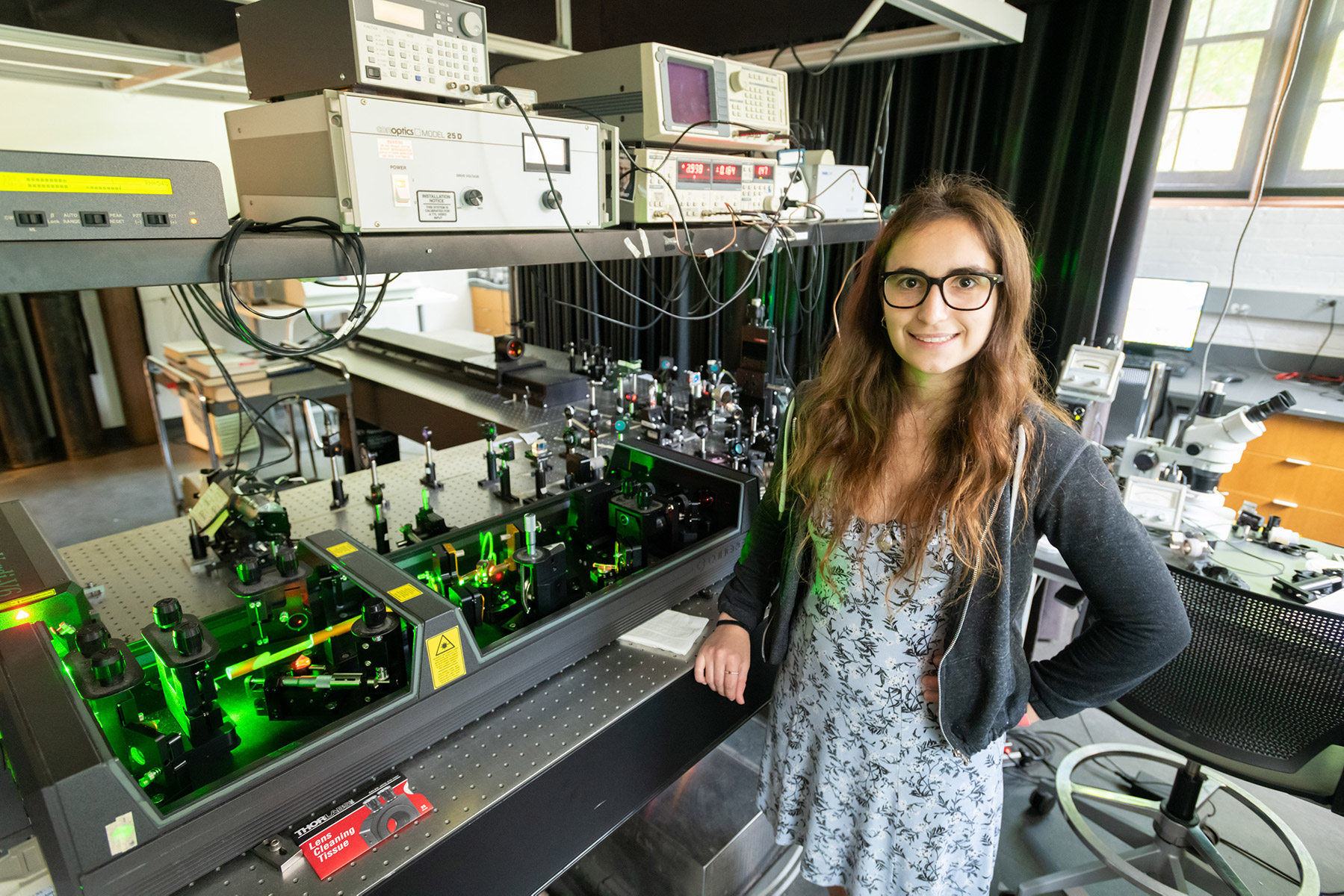
One of the thin substances Binny worked with, known as Bi2Te2Se, is a new material that has not been tested in this way, so she and Professor of Physics Brian Daly were breaking new ground by performing these experiments. “These ultrafast lasers produce pulses of light that are less than one picosecond (a millionth of a millionth of a second) in duration,” Daly said. “This allows us to investigate extremely short-lived phenomena in these solid materials, including the conduction of heat and the propagation of ultrasound in novel nanostructures (such as Bi2Te2Se).”
Binny, a physics major from London, England, started the research project with Daly during the previous academic year. She said the 10-week URSI project had enabled her to enhance her skills in the lab and conduct her research and analyze the results in much greater detail.
“I enjoyed being able to go into the lab already knowing how to use most of the equipment and knowing the basics of physics behind it,” Binny said. “There were still new things to learn, and I felt like knowing the basics allowed me to begin to understand things in more depth. I found that applying what I had learned in class allowed me to have a more concrete understanding of the materials, and it felt a lot less abstract.”
Charting the Consequences of Too Many Deer
Throughout the Northeast, high densities of white-tailed deer are affecting the composition of urban and rural environments. “We know deer change the ecology, but we’re asking at what point does their abundance become a negative,” said Associate Professor of Biology Lynn Christenson, who oversaw the URSI project.
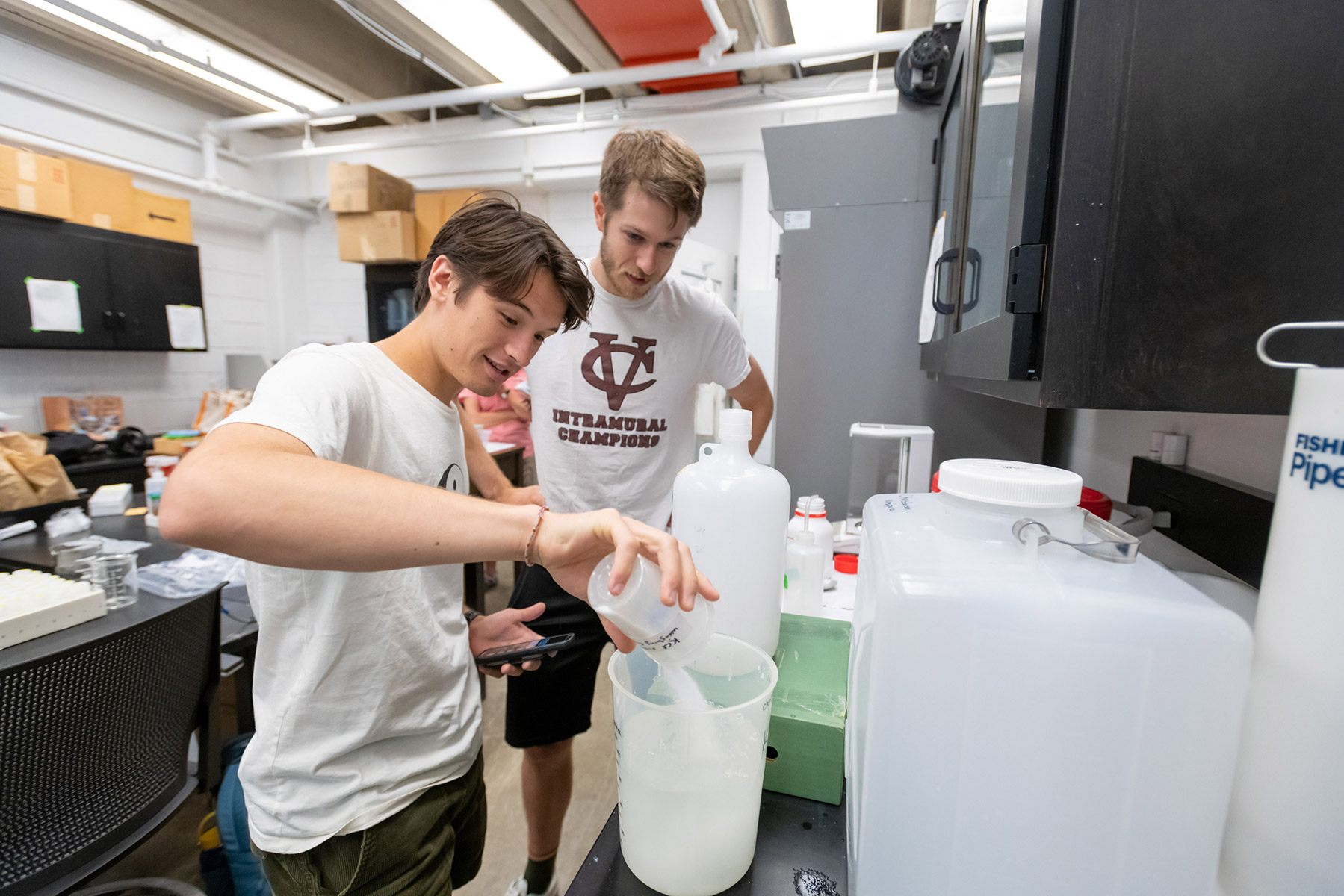
Two students, Andrew Blackburn ’24 and Jackson Buettner ’23, collected samples of vegetation and soil in nearby preserves, some of which had areas that had deer management programs and others that did not.
Blackburn, a biology major from Needham, MA, collected decomposed leaf litter from red oak and sugar maple trees as well as the tiny invertebrates that help to decompose the leaves. He measured the carbon and nitrogen content of the samples he collected to determine the ecological health of the plots of land.
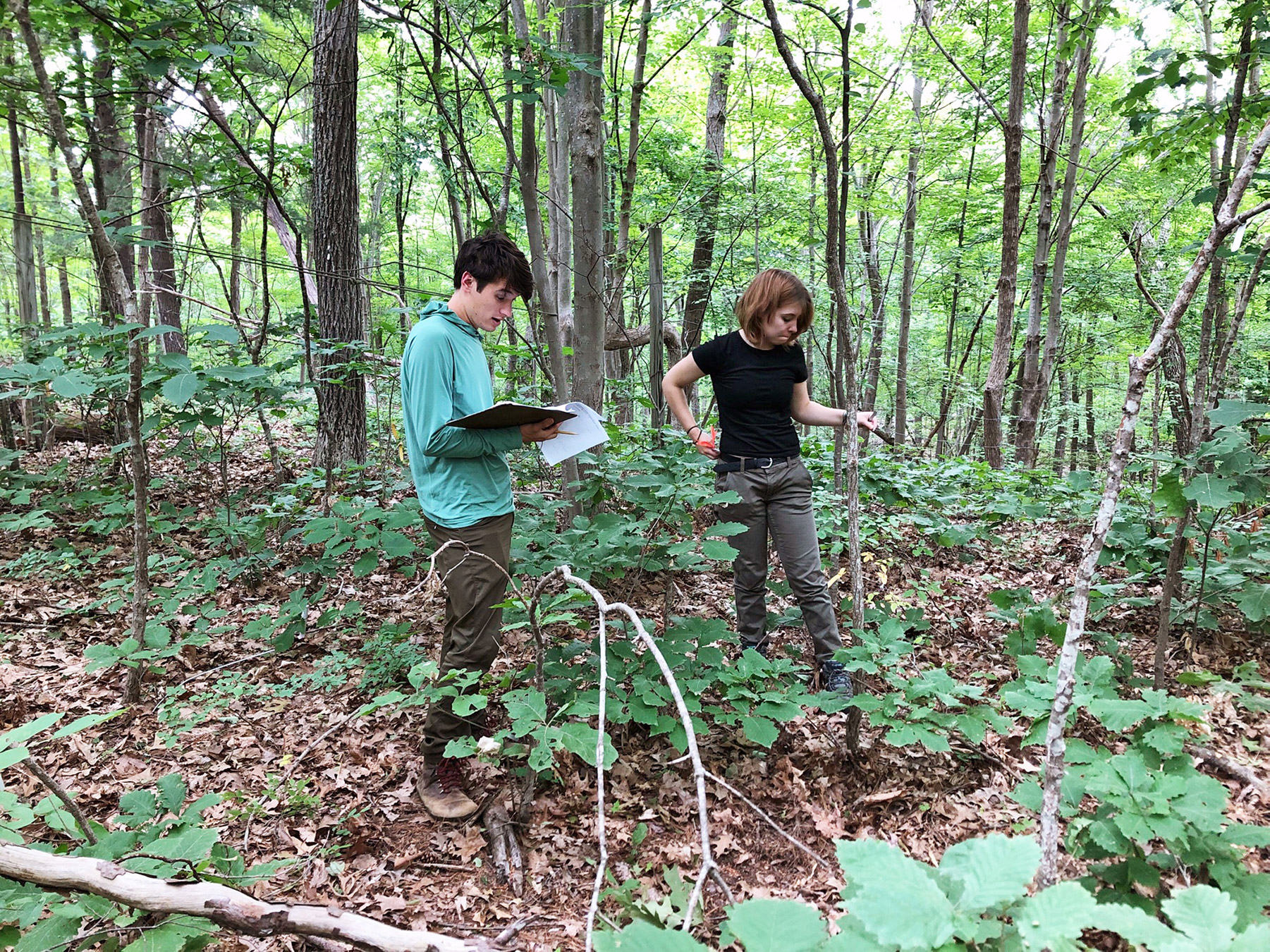
Buettner, a biology major from Dummerston, VT, performed similar tasks at the Vassar Ecological Preserve and at the Huyck Preserve and Biological Research Station in Rensselaerville, NY, near Albany. Their research confirmed that areas of the preserves that did not practice deer management were adversely affected.
While Blackburn and Buettner were gauging the effects of deer on plant life, the third member of the team, Jason Cooper ’23, was gathering data on how the growing abundance of deer in rural New Hampshire was affecting the local moose population. The Hubbard Brook Experimental Forest was equipped with 26 cameras that captured images of animals as they moved through the forest. By plotting this data with GIS software, Cooper was able to show that the growth of the deer population contributed to the drop in the moose population. This happens, Christenson said, because deer carry certain kinds of parasites that are not harmful to them but are harmful to moose. Furthermore, deer are less adversely affected by a warming climate, so they continue to thrive while moose are less likely to survive.
Cooper, an environmental studies major from Northampton, MA, said his URSI experience had prepared him for the kinds of research he plans to engage in when he continues his studies in graduate school. “Opportunities like URSI make me grateful to attend Vassar, where I have the privilege of doing graduate-level work with distinguished professors and other students that push me to be better every day,” he said.
Christenson said she always enjoys watching her URSI students expand their capacity to learn by engaging in original research. “The best part of URSI is watching the students learn on the fly and put all the pieces together,” she said. “Watching the students see all the pieces of the chain and learn how connected they are, that’s always gratifying.”
Debris from Old Volcanoes Provide Clues to Future Eruptions
Rocks collected recently from long-dormant volcanoes in Nicaragua are so porous they float in water. For their URSI project this summer, Carter Mucha ’23, Monika Sweeney ’24, and Sebastian Montanez ’25 analyzed these samples to help geologists understand how violent future eruptions may be.
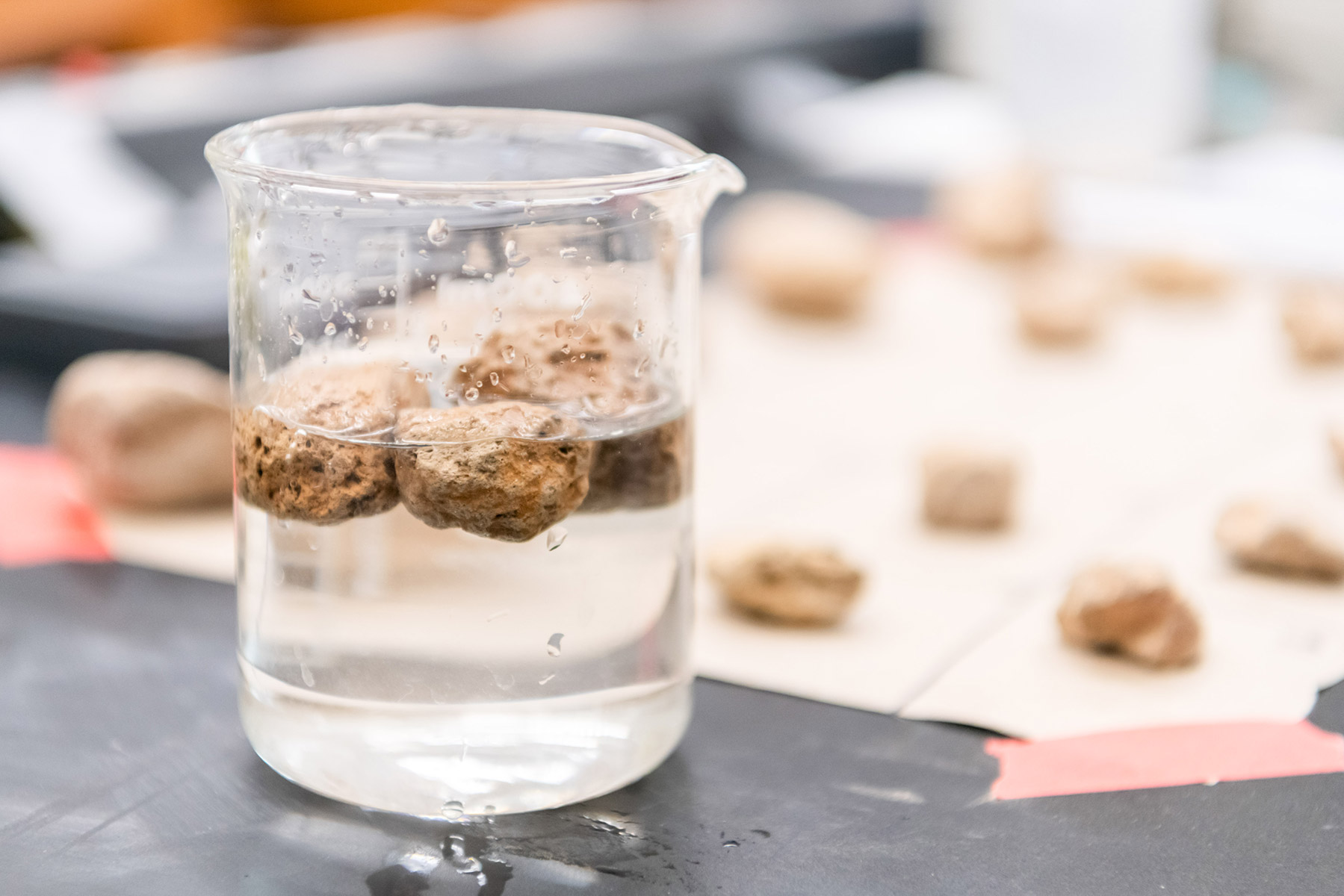
John Zayac, Adjunct Instructor in Earth Science, collected the rocks from eruptions that occurred between 400,000 and 600,000 years ago during a trip to Nicaragua in 2017. “One thing we found fascinating was that almost all of the samples were about 80 percent air,” Zayac said.
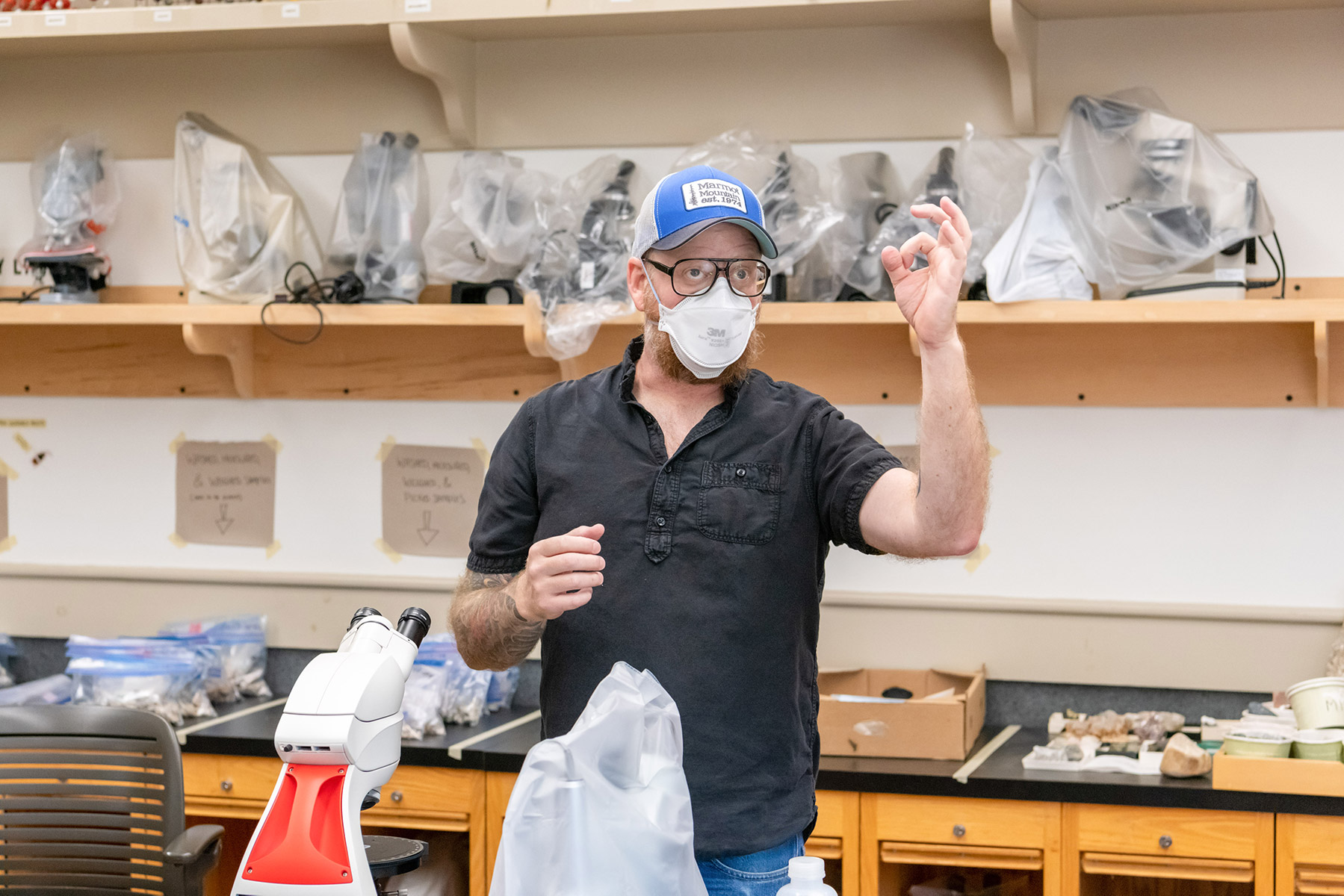
Zayac said the students determined that the samples indicate they were generated during “highly dangerous eruptions that generated plumes of ash and rock that can travel great distances at speeds up to 65 miles per hour. “Having evidence of these types of eruptions occurring in the past suggests they could occur again,” Zayac continued. “Developing a conceptual model of how the magma was generated, and how it was staged in the crust prior to eruption can help us develop a plan for detecting and monitoring the region.”
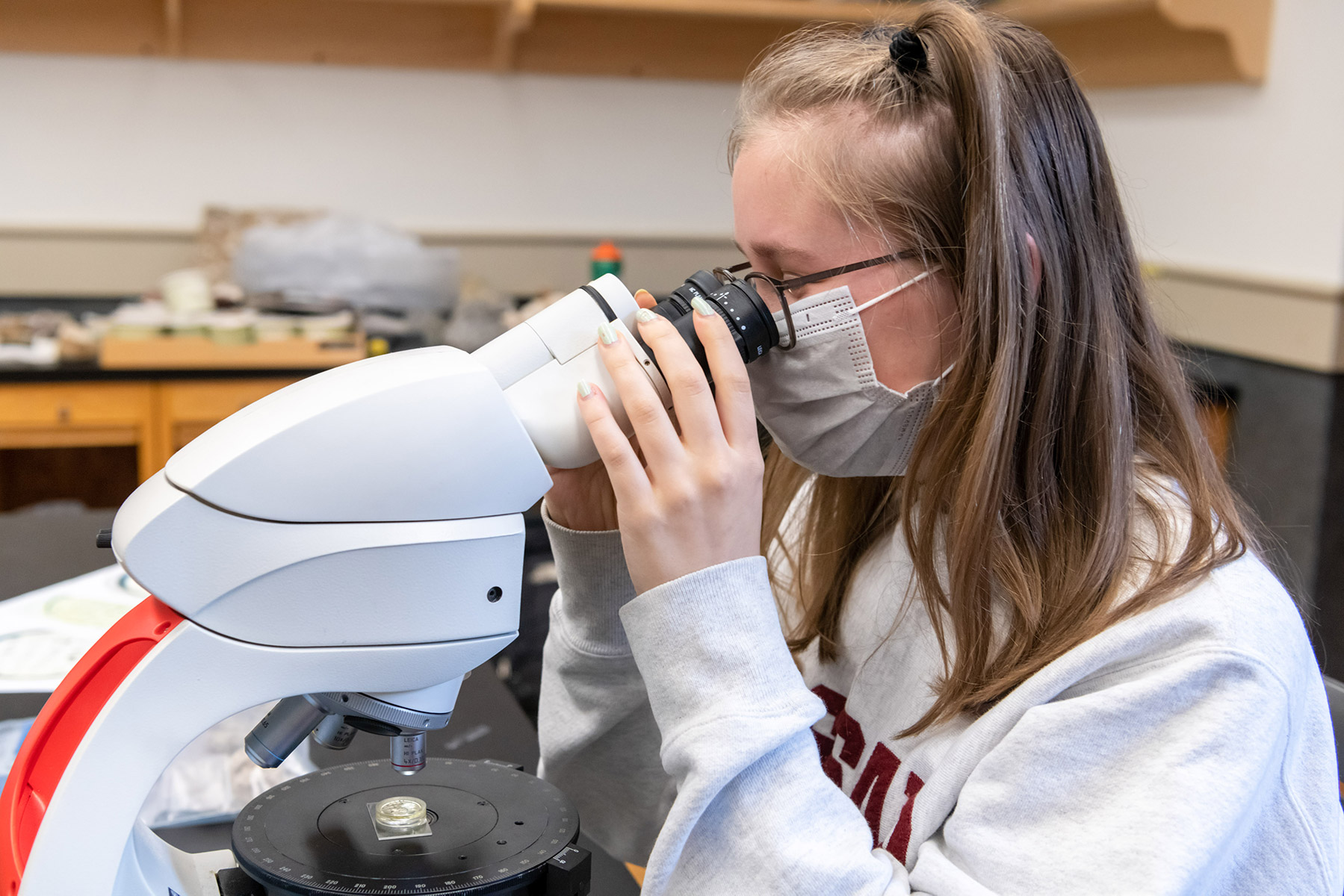
Sweeney, an earth science major from Queens, NY, said her URSI experience had enhanced her understanding of the nature of volcanoes and the skills she would need to continue such research. “During my time working with these pumice samples, I was struck by how much information we can pull from a rock that can fit in the palm of my hand,” she said. “This project helped me understand the nature and evolution of volcanic eruptions as well as how critical all the veins of scientific research are––from data collection and prepping samples to running different forms of analysis and consulting current scientific literature. Spending 10 weeks working on this niche topic truly broadened my understanding of volcanology and general lab skills as a whole.”
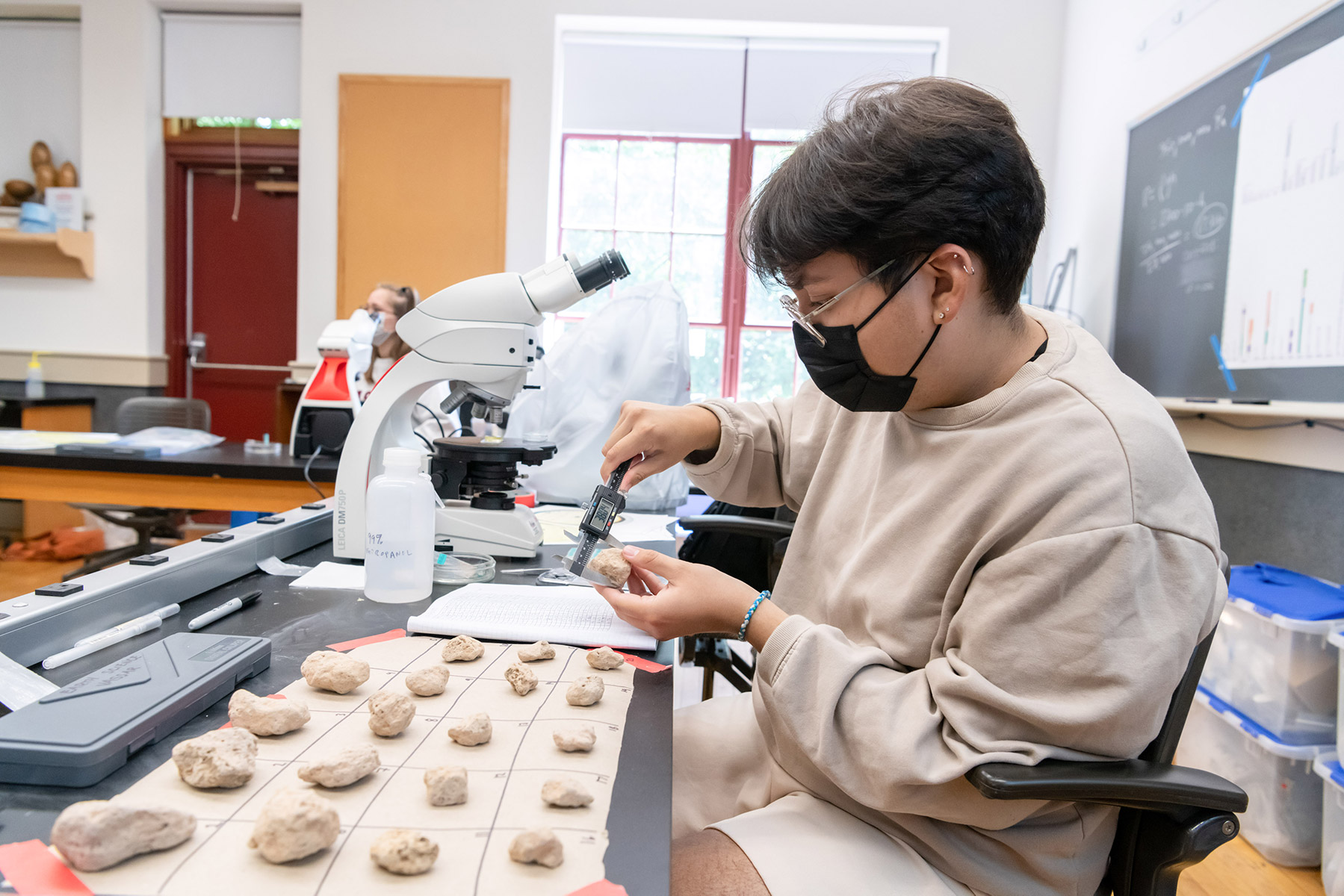
Montanez, an earth science major from Nogales, AZ, agreed. “Almost everything I did this summer I learned on the job,” he said. “It was a different kind of learning from what I did in the classroom or even in the lab.”